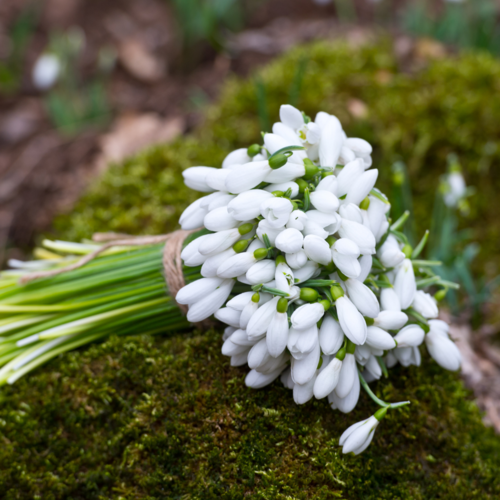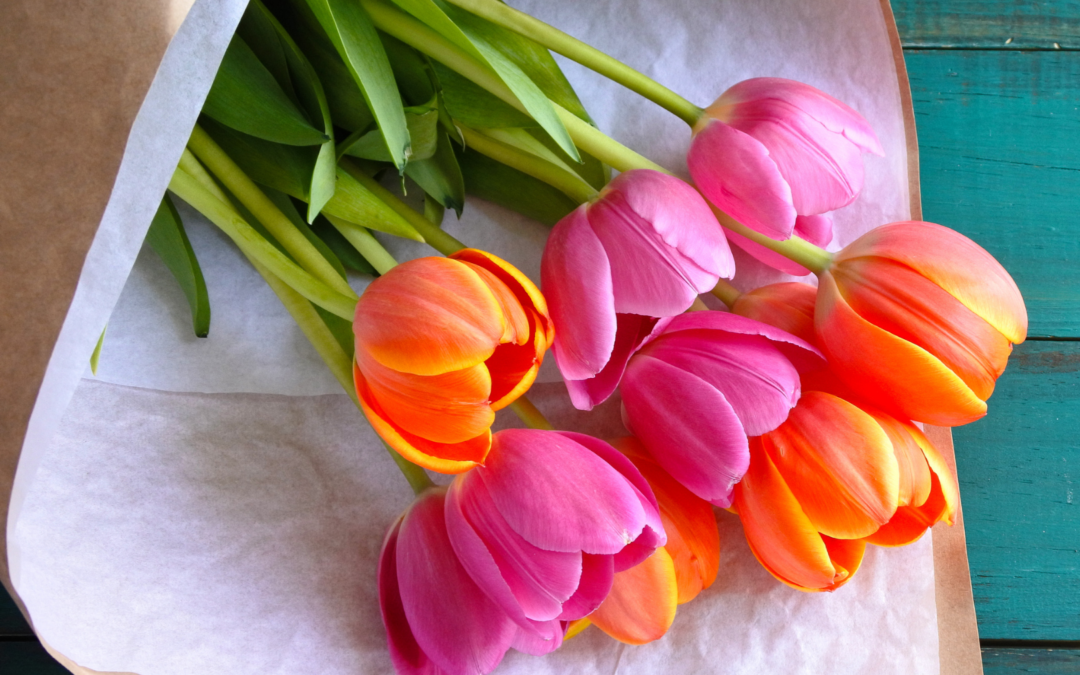
by Wildwood Outdoor Living | Oct 22, 2021 | Gardening 101
The Snowdrop, also known as Galanthus is a flower with purpose and tradition. With over 20 varieties the Snowdrop belongs to the Amaryllidaceae family. Popular in many folklore tales, the Snowdrop was believed to be from Britain but was later discovered as originating from all over Europe and the Middle East. This perennial fall bulb (spring flowering) is famous for being the first flower to make an appearance after winter. Eager to grow, it often pushes it’s way through snow sending it’s onlookers a sigh of relief that spring is on its way.
Folklore
” At the beginning of time, Snow searched for a color to borrow. The elements admired flowers and their colors. When Snow asked and pleaded for one of the colors of the flowers, the flowers turned way denying Snow a color; they felt Snow was too cold and unpleasant. The snowdrop however felt sorry for Snow and offered it its color. Snow accepted the gift and became white from that point on. To show its gratitude, Snow allowed snowdrops to bloom at the end of winter with Snow’s protection against snow and ice. Snow and snowdrops exist side-by-side as friends.” – Floraqueen.com
Symbolism
The Snowdrop is a symbol of purity, innocence and hope. As the first sign of spring, hope is brought to mind for those longing for warmer and brighter days. While it’s white blossoms symbolize innocence and purity. When presenting a Snowdrop as a gift, it is said to represent rebirth and the strength to overcome challenges.
Varieties of Snowdrops
Each variety of Snowdrop is very similar to the other with minor differences making them all unique in their individual way. All elegant and dainty, you can find variations of Snowdrops that are tall or small, single petals or double petals. Some with green accents and some without. Here are a few types of Snowdrops that you can find online at Wildwood.Express.

Snowdrop Mount Everest A tall variety of Snowdrop. Growing up to 8 inches high with a large white flower.

Snowdrop woronowii (Ikariae) The tallest of Snowdrops, with a mature height of up to 10″ tall.

Snowdrops Galanthus Elwesii The Galantus Elwesii grows only 4″ tall and is the most common variety of Snowdrop. The perfect variety naturalizing.

Snowdrop Double Flore Pleno Growing 4″ tall, the Double Flore Pleno Snowdrop is a fluffy double Snowdrop, also known as Perce De Neiges.
Growing Snowdrops
Subtilty fragrant, Snowdrops are a perennial fall bulb (spring flowering bulb) that can grow in many types of soil. They’re a low maintenance plant that only require a cool or moderately cool winter for them to bloom. The Snowdrop is toxic to humans and pets, and should be planted where they will not be accidentally ingested. However, this also makes them resistant to deer, squirrels, chipmunks and more. To plant your Snowdrops this season, follow the quick and easy steps below.
1.) Plant your Snowdrops before the ground freezes in your zone, sometime between September and December. Choose a full sun to partial sun location.
2.) Loosen your soil and add your compost of choice.
3.) Add 5-10-10 granular fertilizer and mix soil until well blended.
4.) Place your Snowdrops with the pointy side up, 3 inches deep and 4 inches apart. When in doubt, you can always place them on their side!
Inspiring Snowdrops
As you can see below, the Snowdrop is a great choice for mass naturalizing. Giving your landscapes fairytale character and interest. Over time, the Snowdrop will spread naturally, creating beautiful large drifts of gorgeous white blossoms.




Sign up
here for more blogs dedicated to better gardening

by Wildwood Outdoor Living | Sep 23, 2021 | Gardening 101
Just when you think winter couldn’t get any more windy, wet, and cold, you step outside and notice something new. Something emerging from the ground that reminds you that spring is on its way! And it’s all thanks to you and your fall bulb planting back in October! When planting fall bulbs, Tulips are famous for making an early, long-lasting, spring entrance which makes them one of the most popular fall bulb choices. In this article, we’re going to teach you what there is to know about our friend the Tulip and how you can get started on your very own this fall.
About Tulips
From classic folklore tales of “true romance”, the Tulip has been crowned the flower of perfect and deep love, making them ideal for gifting to your partner, children or family. Originally from Turkey, the Tulip comes in over 150 varieties. The most common varieties of Tulips are Double Peony, Fringed Tulips, Triumph Tulips, Parrot Tulips, Single Early, Double Early and more! All incredibly different, with many different shapes and colours available in each variety.
Single Early Tulip
With their district cup shape and 6 petals, Single Early Tulips are on average 10-18 inches tall. Single Tulips are one of the earliest bloomers in cool weather and they also tend to last longer as well. Single Early Tulips pair well with Peonies and Clematis.

Fringed Tulip
Also known as “Crispa”, Fringed Tulips are famous for their soft fringe. They come in a variety of colors including pink, violet, yellow, white and red and grow up to 14-20 inches tall. Fringed Tulips perform beautifully on their own, or paired with slim flowers.

Double Early
Also known as Peony Tulips. Double Early Tulips resemble Peonies with their layered pedal arrangements. Double Early Tulips grow 10-16 inches tall and come in a huge variety of colors. Double Early Tulips are sensitive to rain, and prefer to be sheltered. These Tulips are versatile and go great with most flowers!

Parrot Tulips
Named after tropical parrots for their vibrant color and feather like pedals, the Parrot Tulip comes in a large variety of colors including red, orange, yellow, purple, pink, green and white. As a tall Tulip with long stems, the Parrot Tulip can get up to 3 feet tall, making them a delicate variety of Tulip. Add your Parrot Tulips to any flower arrangement for an eye catching exotic look.

How to Plant Tulips
Tulips are an easy to grow perennial that require little maintenance once they blossom. When choosing your Tulip bulbs, be sure to check whether the ones you’re choosing are fragrant are not, as not all Tulips are. This is especially important if you’re going to use your Tulips for fresh cut flowers. Once you have your Tulips selected, you’re ready to follow these quick and easy steps for growing them.
1.) Plant your Tulips= bulbs in September or October, when the soil is 15C in well-draining soil with full sun or partial shade.
2.) Plant the Tulip bulbs 5-7″ deep and 4-5″ apart, with the pointed side of the bulb face up.
3.) Water your bulbs well and wait for spring!
Once your Tulips have bloomed, be sure to allow the foliage to die back without pruning. This allows the foliage to fall to the ground, nourishing the soil for future growth. Tulips require little maintenance, with little to no watering depending on Mother Nature. If your Tulips aren’t getting enough rain, you can water them once a week.
Look at that, you’re ready to plant your own Tulips! Now you can expect beautiful Tulip blossoms year after year. With every year, comes more unique colorful combinations and varieties of Tulips for you to enjoy every spring. Happy gardening!
Have a question? Let us know at info@wildwoodoutdoorliving.com.
Sign up here for more blogs dedicated to better gardening
















